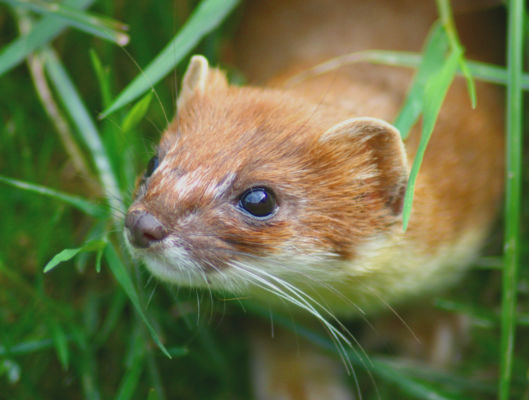Genetic profiling sounds like something from a crime thriller, but it is a modern scientific technique that can be used to better understand the dispersal behaviour of animals and relationships between various populations. Auckland’s various stoat population were recently the subject of a genetic profiling study which revealed intriguing information about connectivity and migration.
Female stoats have a single litter of about nine kits in October each year, meaning the stoat population peaks over the summer months. Mortality among young stoats is high as they disperse to find their own territories. Most settle within 5-6km of their mother’s territory, but they can travel much further. Young males regularly travel 20km or more and in one unusual instance, a female stoat dispersed over 65km.
The relatedness and dispersal behaviour of stoats in the Auckland region was the subject of a study by A.J. Veale, D.M. Gleeson and M.N. Clout, published in Wildlife Research in 2014. They wanted to find out:
(1) what is the level of connectivity between populations of stoats within the Auckland region;
(2) is it possible to determine the source population of stoats using genetics at a fine-scale;
(3) where did the two incursions on Rangitoto–Motutapu Islands come from; and
(4) what is the potential for successfully eradicating stoats on Waiheke Island?
In the Auckland region, it is estimated that there is a 5-fold increase in stoat numbers over summer and the dispersal of these juveniles can potentially lead to reinvasion of sanctuaries such as Rangitoto and Motutapu Islands. If stoats were to be eradicated from Waiheke Island, it would also be important to know to what extent reinvasion was likely to be an issue – is eradication feasible or are reinvasion prospects high?

Genetic profiling can show how much connectivity there is between populations and can be used to describe dispersal across the landscape. It can detect recent migration and potentially determine what population a migrant came from – thus if a stoat is found after an eradication operation, genetic profiling can determine whether it is a survivor of the eradication (a ‘local’) or a recently arrived immigrant. If it is an immigrant, profiling can potentially identify the source of a reinvasion so that the path for reinvasion can be blocked or controlled.
Genetic profiling can also be used to help evaluate the feasibility of a proposed eradication. If genetic profiling shows little connectivity of a population with its neighbours, then little migration is occurring between those populations and eradication may be feasible, but if, for example, Waiheke Island’s stoat population is closely related to its neighbours then reinvasion may be a constant threat, making eradication impractical and uneconomic.
So what did the genetic profiles of Auckland stoats reveal?
“A sample of stoats from across the region (n=120), was genotyped at 17 microsatellite loci… and five geographic populations defined by genetic clustering. Almost all individuals were correctly assigned to the location of origin, and recent migration rates among forest patches were found to be low… It is possible to define the origin of stoats at this regional scale using genetic measures. From this, we show that the stoat incursion on Rangitoto Island that occurred post-eradication in 2010 probably came from East Auckland (P<0.0001), whereas the 2014 stoat incursion on Motutapu Island probably originated from a population linked to the Waitakeres. Also, the Waiheke Island stoat population has minimal connection to all other populations and it is therefore a potential eradication unit.”
The research has implications for control of stoats in the Auckland region.
“The low migration rates among forest patches indicated that if thorough control is imposed on a discrete forest patch, reinvasion from other forest patches will be relatively low. Importantly, for stoat control in the region, the isolation of the Waiheke Island stoat population means that eradication here is likely to be feasible with low reinvasion pressure.”
This research is published in Wildlife Research. The full report is available through Researchgate:
Measuring connectivity of invasive stoat populations to inform conservation management (2014)

